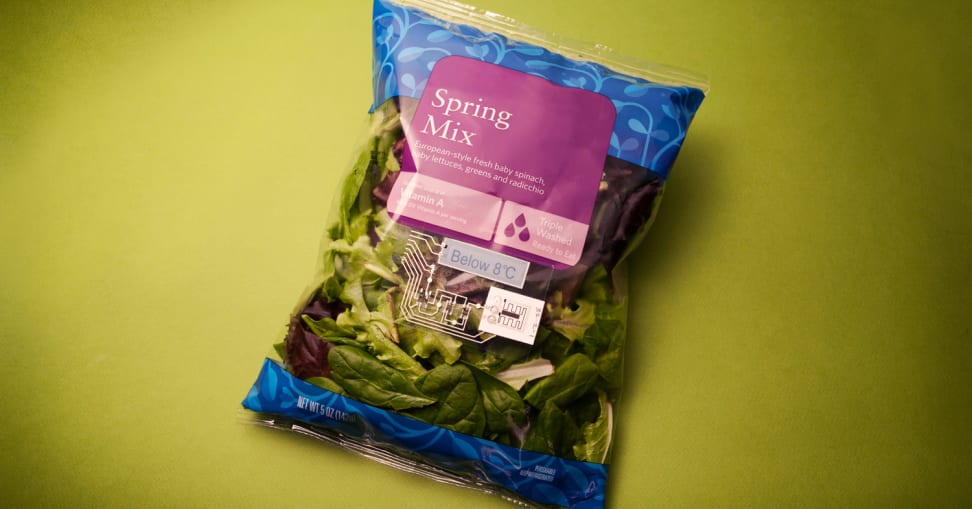Smart Labels Open Up a New World of Information
Because if the 21st century is lacking anything, it's data.
 Credit:
Thin Film Electronics ASA, Norway
Credit:
Thin Film Electronics ASA, Norway
Products are chosen independently by our editors. Purchases made through our links may earn us a commission.
Depending on who you talk to, the Internet of Things (IoT) is either a revolutionary rethinking of our entire infrastructure or a technocratic dystopia that lays to rest any remaining smidgen of privacy.
Today, however, the IoT is just about sensors—cheap, abundant, and dependable sensors. The concept of the IoT relies on attaching these things to physical, "dumb" objects in order to increase their function and value to consumers and society. And right now, most existing sensors are physically limiting.
Your average silicon-based sensor is built for long-term use. So they're not really feasible for small, mobile objects or bendable packaging material. Thinfilm Electronics is looking to change this with the development of printable sensor technology. These "smart labels" can then be used on products and devices that are otherwise ill-equipped for sensor technology.
As you might expect, with this comes an unprecedented stream of new data, and the quantification of previously unquantifiable processes. One of the more obvious applications of this technology is in the grocery store. Instead of looking at the store-printed labels for meat or produce, a printed sensor-enabled smart label could give you real time information about freshness, temperature, source, packaging date and more—useful both at the store and in your kitchen.
In the healthcare industry, printed sensors could be used to track body temperature, bandage wear, or hydration, or they could be used to track and control inventory at hospitals, pharmacies, and medical facilities.
In fact,a lot of these products are already on the market. Blue Spark Technologies, for example, recently showed off the TempTraq—a sticker the size of a business card that can be placed under a baby's armpit, where it will then record body temperature for up to 24 hours. The data is sent to a smartphone app that will chart the baby's temperature over the course of the day.
That's a very specific application of the technology, but its one that shows off how this kind of technology is not limited to commercial purposes. More importantly, it shows how sensor technology (and really, the entire Internet of Things) is not just about smart locks and texting washing machines.
Thinfilm is already banking on the printed sensor technology becoming the industry standard. Earlier this year, the Norwegian company announced a partnership with Xerox to begin mass producing its printed sensors.
Still, there's a side to this story that doesn't often get reported. It's hard to think about a vast, quantifiable, automated commercial ecosystem and not be skeptical about the security of all that data. The IoT is one of those ideas you can speculate about all day, but no one really knows how it will take shape. With the smart home still trudging its feet in 2015, it will be a while before the dream of the Internet of Things becomes a reality.
Related Video
{{brightcove '3978549631001'}}

